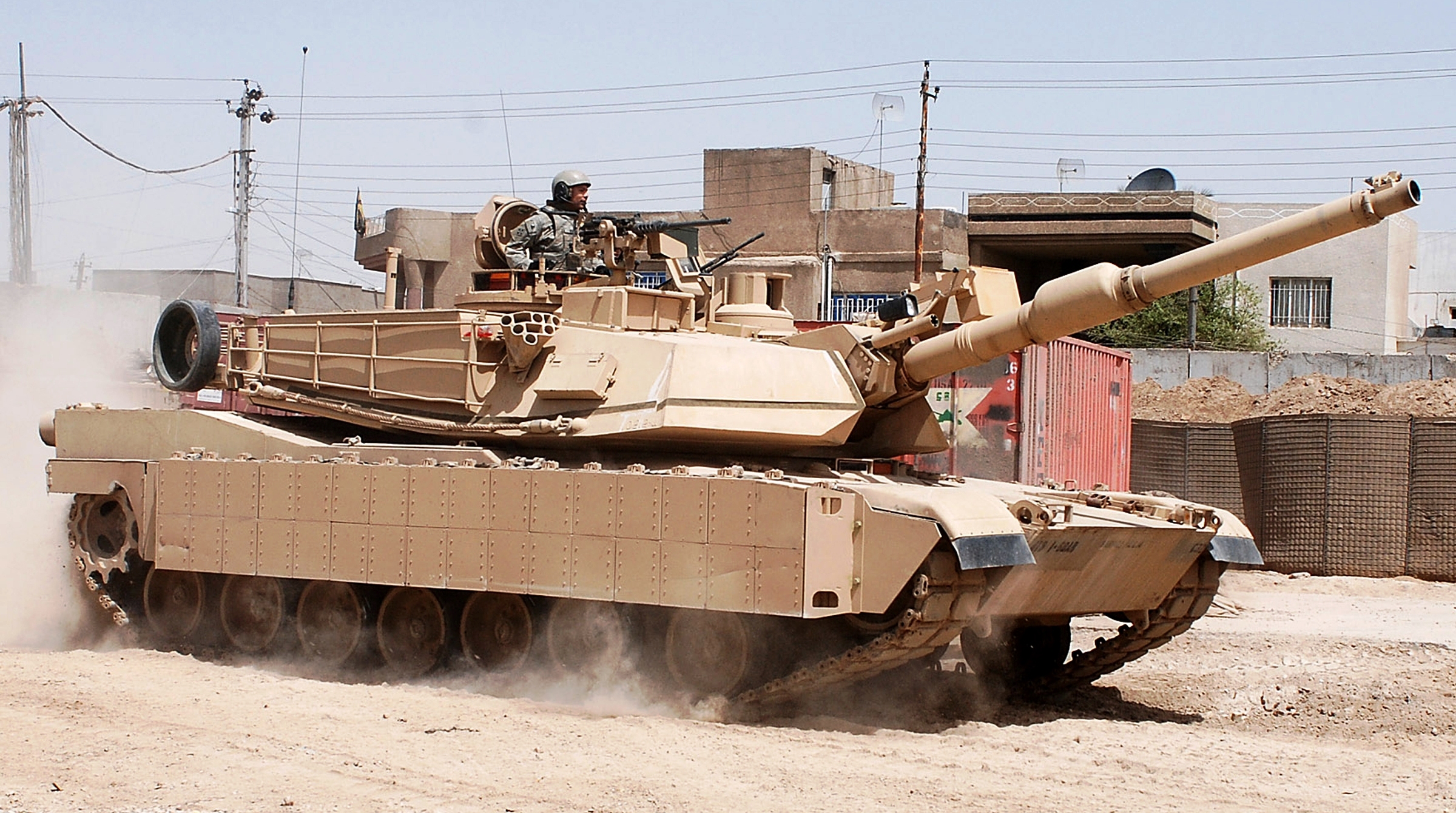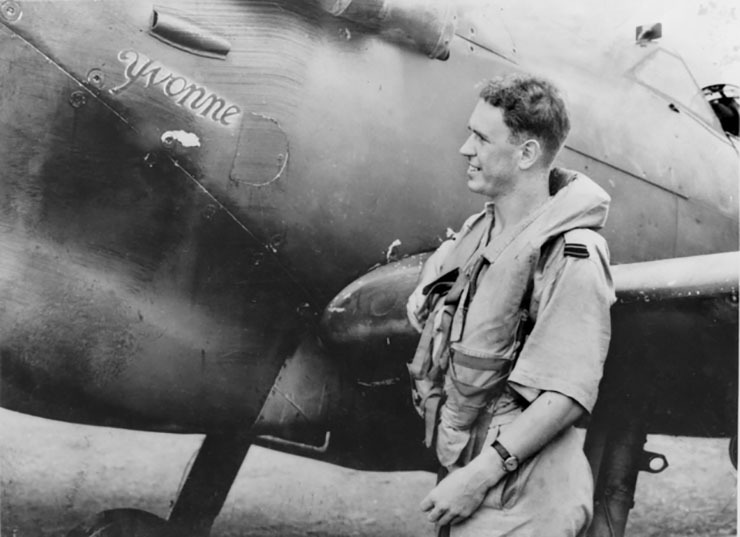
M1 Abrams
Prototype of the MVT-70 tank with installed mock-ups of the fire control system and a later gun without an injector supercharger, with a pneumatic exhaust gas purge system.
During the Cold War, the M48 Patton was the main American tank and many of its allies, followed by the development of the M60. Interestingly, both types of combat vehicles were conceived as transitional vehicles that were to be quickly replaced by target designs, more modern, built using the best available technologies. However, this did not happen, and when the long-awaited "target" M1 Abrams finally appeared in the XNUMXs, the Cold War was practically over.
From the very beginning, the M48 tanks were considered a temporary solution in the United States, so it was supposed to immediately start developing a new promising tank. In the summer of 1951, such studies were commissioned by the then American Chief of Weapons, Tanks and Vehicle Technology, Ordnance Tank and Vehicle Command (OTAC), located at the Detroit Arsenal, Warren near Detroit, Michigan. At the time, this command was under the command of the US Army Ordnance Command, located at Aberdeen Proving Ground, Maryland, but was renamed US Army Materiel Command in 1962 and relocated to Redstone Arsenal near Huntsville, Alabama. OTAC has remained at the Detroit Arsenal to this day, although in 1996 it changed its name to the head of armaments, tanks and vehicles - US Army Tanks and Weapons Command (TACOM).
It is there that design solutions for new American tanks are created, and there designers are often offered specific layouts and solutions based on research conducted here. Tanks in the United States were developed in a completely different way than, for example, aircraft. In the case of aircraft structures, the requirements were defined in terms of desired performance and combat capabilities, however, designers from private companies were left with a lot of wiggle room in choosing a structural system, materials used and specifics. solutions. In the case of tanks, the preliminary designs for combat vehicles were developed at the Armaments, Tanks and Vehicles Headquarters (OTAC) at the Detroit Arsenal and carried out by engineering engineers from the technical services of the US Army.
The first studio concept was the M-1. In no way should it be confused with the later M1 Abrams, even the track record was different. In the case of the project, the designation M-1 was written through a dash, and in the case of a tank adopted for service, the entry known from the US Army weapons nomenclature was accepted - M with a number without a dash and without a break, or space, as we would say today.
Photos of the M-1 model are dated August 1951. What can be improved in the tank? You can give him stronger weapons and more powerful armor. But where does it lead? Well, this brings us straight to the famous German "Mouse", a bizarre design Panzerkampfwagen VIII Maus, weighing 188 tons. Armed with a 44 mm KwK55 L / 128 cannon, such a tank had a top speed of 20 km / h and was a running cover, and not a tank. Therefore, it was necessary to do the impossible - to build a tank with stronger weapons and armor, but with a reasonable weight. How can I get it? Only due to the maximum reduction in the dimensions of the tank. But how to do this, assuming that we increase the diameter of the turret from 2,16 m for the M48 to 2,54 m for the new machine, so that more powerful weapons fit into this turret? And the appropriate solutions, as it seemed then, were found - to put the tower in the place of the driver.
In the M-1 project, the front of the turret overlapped the forward fuselage, similar to the Soviet IS-3. This procedure was used in the IS-3. With a large diameter of the tower, the driver was moved forward, planted in the middle, and the hull machine gun was abandoned, limiting the crew to four people. The driver was sitting in the "grotto" pushed forward, due to which the length of the sides of the tank and the bottom was reduced, which reduced their weight. And in the IS-3, the driver was sitting in front of the turret. In the American idea, he was supposed to hide behind the front of the tower and monitor the area through the periscopes in the fuselage at the edge of the frontal sheet, and take his place, like the rest of the crew, through the hatches in the tower. In the stowed position, the tower had to be turned backwards, and in the cutout under the rear of the tower there was an opening visor, which, when opened, gave the driver a direct view of the road. The frontal armor had a thickness of 102 mm and was located at an angle of 60 ° to the vertical. The armament of the tank at the development stage was to be identical to the armament of the T48 (later M48) prototypes, i.e., it should consist of a 139 mm T90 rifled gun and a coaxial 1919 mm Browning M4A7,62 machine gun. True, the advantages of a larger diameter of the base of the tower were not used, but in the future more powerful weapons could be placed on it.
The photo shows one of the four prototypes of the promising T95 tank in its original form with a 208-mm T90 smoothbore gun.
The tank was supposed to be driven by the Continental AOS-895 engine. It was a very compact 6-cylinder boxer engine with a fan to circulate cooling air directly above it. Due to the fact that it was air-cooled, it took up less space. It had a working volume of only 14 cm669, but thanks to efficient supercharging, it reached 3 hp. at 500 rpm. The engine had to be paired with an automatic dual-range (terrain / road) General Motors Allison CD 2800 gearbox equipped with a power differential on both wheels, i.e. with an integrated steering mechanism (called Cross-drive). Interestingly, just such a power plant, that is, an engine with a transmission and a power transmission system, was used on the M500 Walker Bulldog light tank and the M41 Duster self-propelled anti-aircraft gun created on its basis. Except that the M42 weighed less than 41 tons, making the 24 hp engine. gave it a lot of excess power, and according to the calculations, the M-500 should have weighed 1 tons, so it cannot be denied that it was much larger. The German PzKpfw V Panther weighed 40 tons, and the 45 hp engine. gave it a speed of 700 km / h on the road and 45-20 km / h in the field. How fast would a slightly lighter American car with a 25 hp engine be?
So why is the AOC-895 engine planned to be used instead of the 12-cylinder Continental AV-1790 engine from the 48 hp M690 tank? Indeed, in the diesel version of the AVDS-1790, this engine reached 750 hp. The main thing was that the AOS-895 engine was much smaller and lighter, its weight was 860 kg versus 1200 kg for the 12-cylinder version. The smaller engine again made it possible to shorten the hull, which, in turn, should again reduce the weight of the tank. However, in the case of M-1, these optimal proportions, apparently, could not be caught. Let's take a look at this option. The German PzKpfw VI Tiger weighing 57 tons had the same 700 hp engine as the PzKpfw V Panther. In his case, the power load is approximately 12,3 hp. per ton. For the M-1 design, the calculated load power is 12,5 hp. per ton, which is almost identical. The tiger developed a speed of 35 km / h on the highway, and up to 20 km / h off-road. Similar parameters were to be expected from the M-1 project, this machine would have a very similar power deficit.
In March 1952, the first conference, codenamed "Question Mark", was held at the Detroit Arsenal, which considered the advantages and disadvantages of various solutions in the design of promising tanks. Two more projects, M-2 and M-3, weighing 46 tons and 43 tons, have already been demonstrated at the conference.

